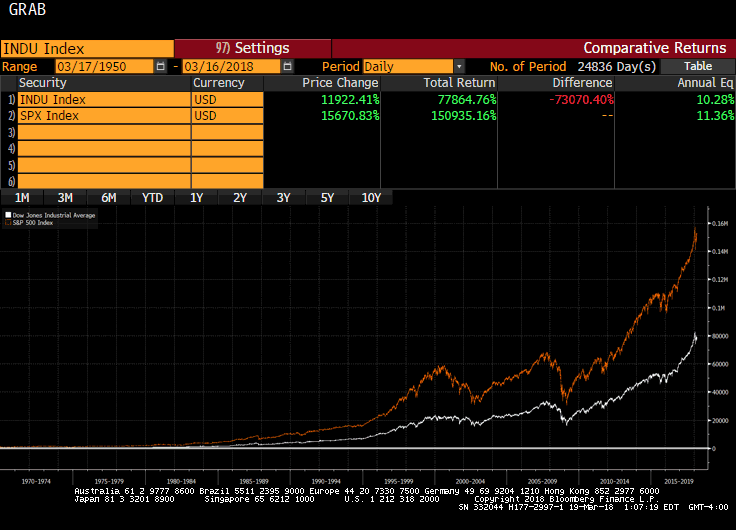“Buy a low cost, passive index fund, and hold it for the long term” is probably one of the most mainstream pieces of investment advice circulating over the past 40 years. While I agree this is a better solution for most busy investors than the high overhead, high fee, and high turnover investment products that still have huge marketing budgets behind them, I believe that interested investors can easily do better than the big low cost index funds (which I sometimes call the “Big Mac” funds for being cheap and mass-produced, but able to solve world hunger) by simply avoiding the biggest stocks that are overbought by the big funds.
The simplest and longest example I can show of this is the total return chart of the Dow vs S&P (Dow Jones Industrial Average vs the Standard and Poor’s 500 stock indices) from 1950 to 2018. Over this 68 year period, the S&P “only” outperformed the Dow by about 1% per year, but this 1% per year compounded is the difference between a $10,000 investment growing to $15.1 million vs only $7.8 million over an investor’s career. The big difference between the two is that the Dow is only made up of 30 companies, which together have probably made up between 10% and 40% of the S&P 500 index’s total value over that period. The other 60-90% of the broader index tracks the total return of smaller companies, which simple math tells us would have done significantly better than the S&P simply by not owning the lagging large cap components of the Dow.

This pattern of larger returns from smaller companies has also been seen in Japan over the past 20 years:

Here is how the new TOPIX index series is designed:


